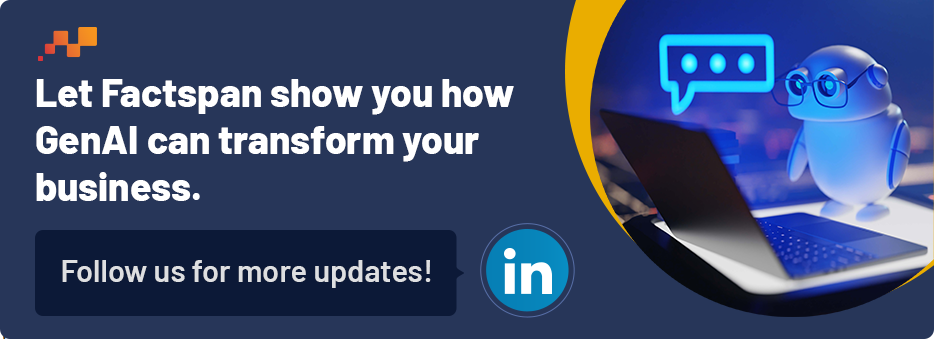Why this blog?
Take a closer look at the essentials of prompt engineering with actionable techniques to optimize your AI interactions. Whether you’re new to AI or an experienced developer, you’ll gain practical insights into enhancing the quality and accuracy of AI outputs. Learn how to create structured prompts, avoid common pitfalls, and leverage advanced strategies like role prompting and chain-of-thought techniques.
A Roadmap from Basics to Advanced Frameworks
Imagine engaging in a conversation with an AI that not only understands your questions perfectly but also provides precise answers, anticipates your needs, and assists you in tasks ranging from drafting emails to debugging code. This isn’t a glimpse into the distant future, it’s the reality unlocked by Large Language Models like ChatGPT today.
In recent years, ChatGPT frameworks have transformed the way we interact with technology. Powered by advanced Large Language Models (LLMs), these frameworks enable AI systems to generate human-like text, understand context, and perform tasks that once required human intelligence. From virtual assistants and customer service bots to tools that aid in writing and research, ChatGPT is transforming daily life and various industries in profound ways.
But tapping into the full potential of ChatGPT isn’t just about posing questions, it’s about how you pose them. This is where prompt engineering comes into play. Just as a well-phrased question can elicit a more insightful answer from a human expert, a carefully crafted prompt can guide ChatGPT to produce more accurate, relevant, and actionable responses. Whether you’re a developer, a content creator, or an enthusiast eager to leverage AI in your daily tasks, mastering prompt engineering is key to unlocking these powerful capabilities.
Why Are ChatGPT Frameworks So Popular?
ChatGPT, developed by OpenAI, is built upon the GPT (Generative Pre-trained Transformer) architecture, which has seen significant advancements over the years. These frameworks are trained on vast datasets, enabling them to understand and generate text that is coherent and contextually relevant. The capabilities of ChatGPT have been enhanced to support a wide range of applications, making it a versatile tool in the AI landscape.
Key Features of ChatGPT Frameworks:
- Conversational Abilities: ChatGPT can engage in dialogues that simulate human conversation, making interactions more natural and intuitive.
- Contextual Understanding: It maintains context over multiple turns in a conversation, allowing for coherent and relevant responses.
- Task Flexibility: From answering questions and providing explanations to generating creative content and assisting with problem-solving, ChatGPT handles diverse tasks.
- Accessibility: Available through APIs and user-friendly interfaces, it allows developers and users to integrate AI capabilities into their applications and workflows easily.
Benefits of Using ChatGPT Frameworks
Adopting ChatGPT frameworks offers numerous benefits across various sectors:
- Enhanced Productivity: Automates routine tasks, such as drafting emails or generating reports, freeing up time for more strategic activities.
- Improved Customer Engagement: Enables businesses to provide instant, personalized responses to customer inquiries, enhancing satisfaction and loyalty.
- Cost Efficiency: Reduces the need for extensive human resources in customer service and support roles, leading to significant cost savings.
- Innovation and Creativity: Assists in brainstorming ideas, writing code, or creating content, fostering innovation and accelerating development processes.
- Educational Support: Acts as a study aid, explaining complex concepts in accessible language and providing learning resources across various subjects.
Real-World Applications and Scenarios
The versatility of ChatGPT frameworks is evident in their wide-ranging applications:
- Customer Support Chatbots: Companies like Zendesk and Freshworks have integrated ChatGPT into their platforms to enhance customer interactions, resolving issues more efficiently.
- Content Creation: Media organizations use ChatGPT to draft articles, generate summaries, or create social media posts, streamlining their content production processes.
- Coding Assistance: Developers leverage ChatGPT in platforms like GitHub Copilot to get code suggestions, debug errors, or understand unfamiliar codebases.
- Healthcare Support: Medical professionals utilize ChatGPT to provide preliminary information to patients, schedule appointments, or manage records, improving operational efficiency.
- Education and E-Learning: Platforms like Coursera and Udemy incorporate ChatGPT to personalize learning experiences, answer student queries, and provide additional resources.
Data and Insights
- Increased Efficiency: Studies have shown that using AI assistants like ChatGPT can increase productivity by up to 40% in tasks such as writing and data analysis.
- Customer Satisfaction: Businesses integrating AI chatbots have reported a 25% increase in customer satisfaction due to faster response times and personalized interactions.
- Cost Savings: Automating routine inquiries with AI can reduce customer service costs by up to 30%, according to industry reports.
- Learning Enhancement: Educational platforms using AI tutors have observed a 20% improvement in student engagement and comprehension.
The Importance of Prompt Engineering
While ChatGPT is powerful, the quality of its output is heavily influenced by the prompts it receives. Prompt engineering is the practice of crafting these inputs to guide the AI toward generating the desired response. Effective prompt engineering can:
- Improve Accuracy: Providing clear and specific instructions reduces ambiguity and enhances the correctness of the AI’s responses.
- Enhance Relevance: Tailoring prompts to include context and relevant details ensures that the output is pertinent to your needs.
- Control Tone and Style: Including style guidelines allows you to align the AI’s output with the desired tone, whether formal, casual, technical, or creative.
- Facilitate Complex Tasks: Breaking down instructions or using advanced prompting techniques enables the AI to handle sophisticated tasks and provide in-depth responses.
Shaping ChatGPT’s Potential Through the Art of Prompts
The ONSET of ChatGPT frameworks marks a significant milestone in the evolution of conversational AI. By utilizing the power of these advanced language models, individuals and organizations can unlock new levels of efficiency, creativity, and innovation. However, to fully realize these benefits, mastering the art of prompt engineering is essential.
As you embark on this journey, consider how the principles and techniques of prompt engineering can be applied to your specific context. Whether you’re looking to optimize workflows, enhance customer experiences, or foster learning and development, the strategic use of ChatGPT can be a game-changer.
In subsequent articles, we’ll delve deeper into the world of prompt engineering, exploring practical techniques and advanced strategies to help you get the most out of ChatGPT and other LLMs. Stay tuned as we uncover the full potential of conversational AI and guide you through the steps to become proficient in this transformative field.
Here’s a glimpse of what we’ll explore:
- The Dawn of Conversational AI: Introduction to Prompt Engineering
- We’ll begin by understanding what LLMs are, the different types that exist, how they are built, and familiarize ourselves with essential vocabulary.
- Crafting Conversations: Writing Good Prompts
- Learn the art of creating effective prompts using delimiters, requesting structured outputs, specifying style guidelines, and more to get the best responses from LLMs.
- Unlocking Advanced Capabilities: Prompting Techniques
- Dive into advanced methods like role prompting, few-shot prompting, and chain-of-thought prompting to refine and control the AI’s output.
- From Theory to Practice: Real-World Usage Examples
- See how prompt engineering applies in practical scenarios—generating structured data, assisting in coding, composing emails, and designing chatbots.
- Navigating the Challenges: Pitfalls of LLMs
- Understand the limitations of LLMs, including issues with bias, inaccuracies (hallucinations), and the importance of ethical considerations.
- Securing Interactions: Prompt Hacking
- Explore how prompts can be manipulated, the risks of prompt injection and jailbreaking, and learn defensive measures to protect against such vulnerabilities.
- Beyond Text: Image Prompting
- Discover how prompt engineering extends to image generation, including techniques to modify style, improve quality, and correct imperfections.
- Striving for Excellence: Improving Reliability
- Learn strategies to enhance the consistency and dependability of LLM outputs through debiasing, ensembling, and self-evaluation.
- Fine-Tuning Interactions: LLM Settings
- Gain insights into adjusting model settings like temperature and top-p to control the creativity and predictability of the AI’s responses.
By the end of this journey, you’ll not only understand the intricacies of prompt engineering but also be equipped with practical skills to make AI work effectively for you. Whether you’re looking to optimize your workflows, innovate in your projects, or simply stay ahead in the rapidly evolving landscape of AI technology, this guide will serve as a valuable resource.
So, are you ready to unlock the full potential of conversational AI? Let’s dive in!











